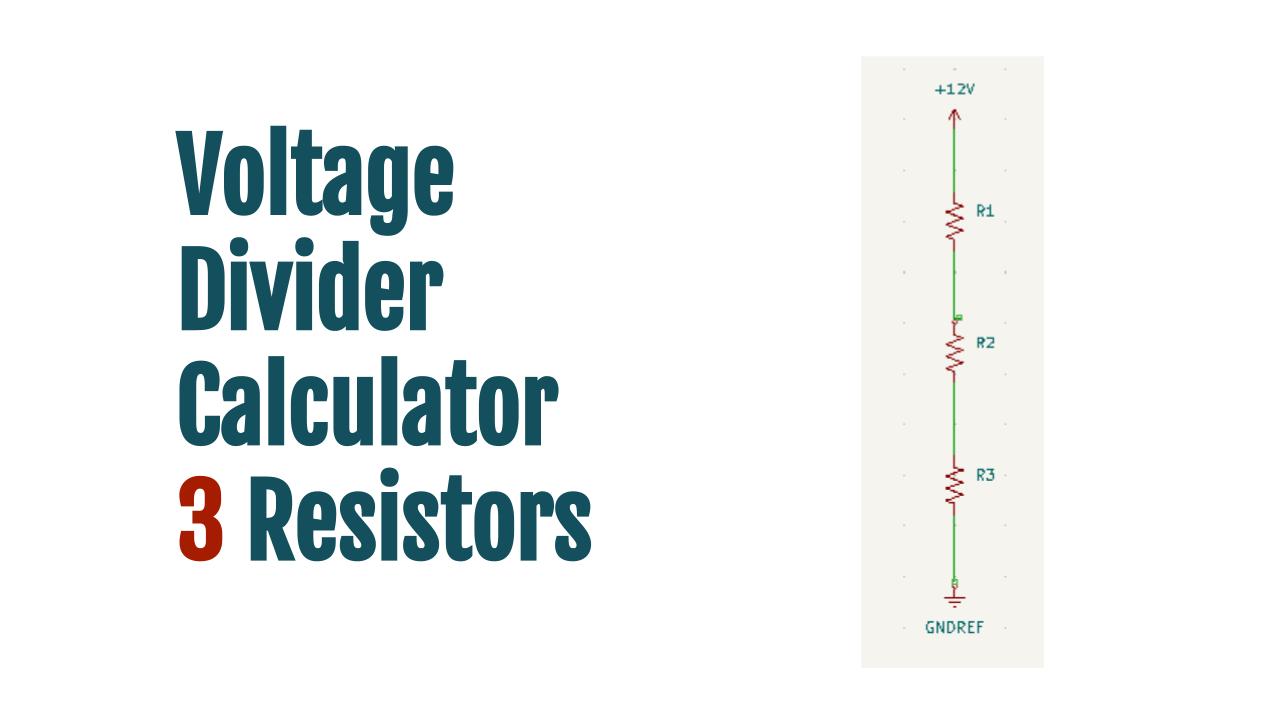This tool calculates the voltage across each of three (3) resistors in series.
Enter the Input Voltage Vin, and resistor values R1, R2, and R3.
Formula
V1=Vin*R1/(R1+R2+R3)
V2=Vin*R2/(R1+R2+R3)
V3=Vin*R3/(R1+R2+R3)
The largest voltage drop will be across the largest resistor value. Conversely, the smallest voltage drop will be across the smallest.
If you want to calculate the voltage drop across two resistors in series, set R3=0. In the equations above V3 will be zero (no voltage drop across a short circuit) and effectively this is reduced to a two resistor divider network.
Example Calculation
With R1=1Ω, R2=3Ω, R3=5Ω and Vin=12V, the voltages
- V1=1.33V
- V2=4V
- V3=6.67V
The sum of the 3 voltages = the input voltage. As a check you can see that 1.33+4+6.67= 12V
Background
A voltage divider is a simple circuit used to reduce voltage by dividing it between two or more resistors. It works based on Ohm’s Law and is commonly used in electronics to scale down voltage levels to a desired value for different parts of a circuit.
How It Works:
In a basic voltage divider, two resistors (R1 and R2) are connected in series across a voltage source (V_in). The output voltage (V_out) is taken from the junction between the two resistors. The formula to calculate the output voltage is:
V_out = V_in * R2/(R1 + R2)
This equation shows how the voltage is divided proportionally based on the values of R1 and R2. The greater the resistance of R2 relative to R1, the larger the output voltage V_out will be, and vice versa.
Applications of Voltage Dividers
- Signal Level Adjustment: Used to reduce voltage levels, such as lowering a sensor signal to a microcontroller’s input range.
- Reference Voltage: Used to create a reference voltage for certain parts of a circuit, like an analog-to-digital converter (ADC).
- Biasing Transistors: Helps in setting the operating point of transistors in amplifiers.
Example
If you have a 12V battery and two resistors of 1kΩ and 2kΩ, you can use a voltage divider to step down the 12V input to 8V.
Important Considerations
- Load Sensitivity: The voltage divider’s output is load-dependent, meaning if you connect a device with significant current draw to V_out, the voltage will drop.
- Power Dissipation: As current flows through the resistors, they dissipate heat, which needs to be managed in high-power applications.
Voltage dividers are simple but effective tools in electronic circuits for adjusting voltage levels where high precision or large power handling is not required.
Related Calculators
- Voltage Divider Calculator with 2 resistors
- Voltage Divider Calculator with 4 resistors
- Voltage Divider Calculator with 5 resistors
